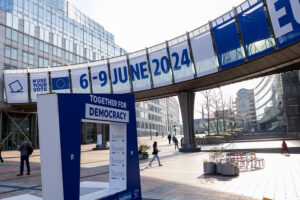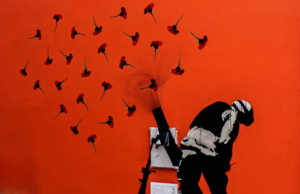The leitmotif of the parliamentary elections was the question of whether the opposition would be able to remove Smer-SD and its chairman Robert Fico from government. Although coalition negotiations are still ongoing, it is clear that Fico is going into opposition and his former coalition partners are outside parliament
The result of the elections can be summed up in the statement „one winner, many losers“: the clear winner is the conservative-populist movement of Igor Matovič, but a good result was also achieved by Boris Kollár’s party, which has a similar focus; traditional parties – both coalition and opposition – failed to meet the expectations; the losers include the left – both parliamentary and non-parliamentary; right-wing extremism again strengthened unnoticed, but not as intensively as expected; the Hungarian parties did not get into the parliament for the first time.
Crisis of the left
The results of the parliamentary elections confirmed the trend set in the European elections: the left is in crisis – the dominant Smer-SD (Direction – social democracy) has been retreating from its power positions for a long time, but filling this space with another leftist entity is meeting with no success.
Although Smer calls itself a left-wing party, it has de facto been pushing the ruling party’s social-conservative agenda. The year 2018 was a turning point for them. Since the murder of journalist Ján Kuciak, Smer-SD faces constant pressure from the opposition, the media, and the non-governmental sector, as reflected in the municipal elections (2018), presidential and European elections (2019) and ultimately in this year’s parliamentary elections. In these, Smer lost almost 10% (approx. 190,000 votes) and 11 seats in comparison with the 2016 elections.
As for the non-parliamentary left, Komunistická strana Slovenska (KSS, Communist Party of Slovakia) was unable to pay the bail and did not participate in the elections. Another party, Solidarita – hnutie pracujúcej chudoby (Solidarity – the working poverty movement), did not become more visible in the campaign, which was also reflected in the election gain (0.1%).
In particular, Eduard Chmelár’s movement Socialisti.sk (Socialists), whose programme was based on the three pillars solidarity – peace – ecology, raised some hope in the space on the left from Smer. Chmelár reached 2.7% in the presidential election. If his entity managed to cross the 3% threshold, it would have ment a financial contribution from the state to the movement’s activities, which would undoubtedly be an impetus for the non-parliamentary left.
Negotiations on the possible joint action of the radical left initiated by Chmelár were only partially successful – only Vzdor – strana práce (Defiance – Labor Party) responded to the offer, and Front ľavicovej mládeže (Front of the Left Youth) also strengthened the Socialisti.sk list of candidates.
However, the common electoral list of the radical left did not fulfill its potential – it gained 0.55% (about 15,900 votes), which more or less copies the KSS profit four years ago.
Disillusionment in opposition
The election night also embarrassed the opposition. It was generally expected that the government would be formed by a liberal-right tandem of the parties Progresívne Slovensko and Spolu (Progressive Slovakia and Together) or the party of the ex-president Andrej Kiska Za ľudí (For People). Kresťansko-demokratické hnutie (The Christian Democratic Movement) and liberal Sloboda a solidarita (Freedom and Solidarity) were supposed to reinforce the new non-Smer coalition, while the populist movements of entrepreneurs Igor Matovič Obyčajní ľudia a nezávislé osobnosti (Ordinary People and Independent Personalities) and Boris Kollár Sme rodina (We Are Family) were took into account more as an emergency.
However, the Slovak voter unexpectedly shuffled the cards: the ex-president got to parliament very narrowly – he exceeded the five percent threshold needed to enter parliament by only 0.77%. Christian Democrats lacked 0.35% and a tandem of Progresívne Slovensko and Spolu remained in front of the gates of parliament. For coalitions, the threshold for joining the parliament is not 5% but 7%, and liberals gained 6.96%. They lacked 926 votes, which is the least in the history of Slovak elections. The other liberal party Sloboda a Solidarita gained just over 6%.
Matovič and Kollár ranked first positions and opposition outsiders became key players in the formation of the government. Kollár finished third with 8.3% and Matovič with a 25% convincingly won the elections. Compared to previous elections, he improved by 14% and 34 seats.
Regarding the outcome of right-wing extremists of Kotleba’s Ľudová strana naše Slovensko (People’s Party Our Slovakia), at first sight it seems they have experienced a loss for the first time: in 2016, extremists gained 8.04%, and now 7.97%. This figure is slightly distorted due to higher participation. In absolute figures, however, extremists gained an extra 20,000 votes and added 3 seats.
Who else has not succeeded?
At this point, it is required to draw attention to the outcome of several entities. First, the coalition partners of Smer – Slovenská národná strana (Slovak National Party) and the Hungarian party Most-híd (Bridge) – completely failed. Both found themselves outside parliament. Nationalists dropped to just over 3%, Most even to 2%.
Neither succeeded another Hungarian project Maďarská komunitná spolupatričnosť (Hungarian community togetherness), which formed a definite opinion against the participation of Most-híd in the government. The MKS gained less than 4%, which means that for the first time none of the Hungarian parties will sit in the Slovak parliament.
And thirdly, Štefan Harabin, who founded the conservative-populist party Vlasť (Homeland) targeting mainly the disappointed voters of Smer and SNS before the elections. In the long term, it was expected that due to the very good result in the 2019 presidential election (third place with 14.3%), he can shuffle cards also in parliamentary elections. During the whole campaign, however, he failed to break away from the 2-4% threshold and ended with 2.9% in the elections.
For and against
The change that the Slovak society has been longing for was given the green light in the elections. However, the majority of the population is wondering whether they imagined the change in such a constellation.
The coalition of the liberal parties Progresívne Slovensko and Spolu was supposed to be responsible for the changes. This trend was also supported by the results of last year’s elections (Zuzana Čaputová, vice-chairman of Progresívne Slovensko became the winner of the presidential election and the coalition of PS and Spolu won in the subsequent european elections). The liberal tandem would be supplemented by the Kiska’s party and Christian Democrats in the future coalition. Matovič and Kollár were counted only in case of necessity because of their populist and unstable attitudes.
In the context of the results it can be stated that in the election, along with the left, the liberal stream fell. It also withdrew the Christian Democrats, who under the leadership of the new chairman Alojz Hlina began to open a cooperation with the liberals, and to a certain extent also with the party of the ex-president Andrej Kiska, who tried not to form a definite opinion during the campaign.
Igor Matovič was always a supremely unstable and conflicting element. His tools were provocation and confrontation. Now he’s supposed to lead the government. Moreover, the one where both ultra-conservative politicians from smaller parties running for Matovič’s list of candidates and Sulík’s liberals from SaS will be represented.
Several analysts point out that this is why Matovič is trying to create a broad four-party coalition with a constitutional majority. In this way, the future prime minister can insure himself before leaving with either part of his coalition partners or part of his own parliamentary group, which is not homogeneous in value at all.
Another potential conflict may arise in the field of international anchoring. While Matovič, Kiska and Sulík always promoted the strong Euro-Atlantic orientation of Slovakia, Kollár had no problem with criticizing anti-Russian sanctions. His movement is considered a Slovak ally of Marie Le Pen or Matteo Salvini.
Prospects
The 29 February 2020 has confirmed that the key to elections in capitalism is not the values or quality of the programme, but the amount of money a party can invest. The campaign of the last election was evaluated as the most expensive one in history – the parties invested 2.1 million euros together in the campaign. Election survey rankings basically copied the ranking of parties according to their investment in election activities.
Despite this, however, there is a space for a non-parliamentary left. The new right-wing government is likely to be more in favor of saving than extending social measures and is ready to improve the business environment, in particular to the detriment of workers’ rights.
Adding to this the continuing erosion of Smer which is likely to intensify during this parliamentary term, especially in the context of the internal party duel of electoral leader and former prime minister Peter Pellegrini with party chairman and ex-prime minister Robert Fico. In the next two years, if the non-parliamentary left entities seek a way to cooperate and their structures will be dedicated to activist activity among the population, the next elections to the regional councils in 2022 may pleasantly surprise.


